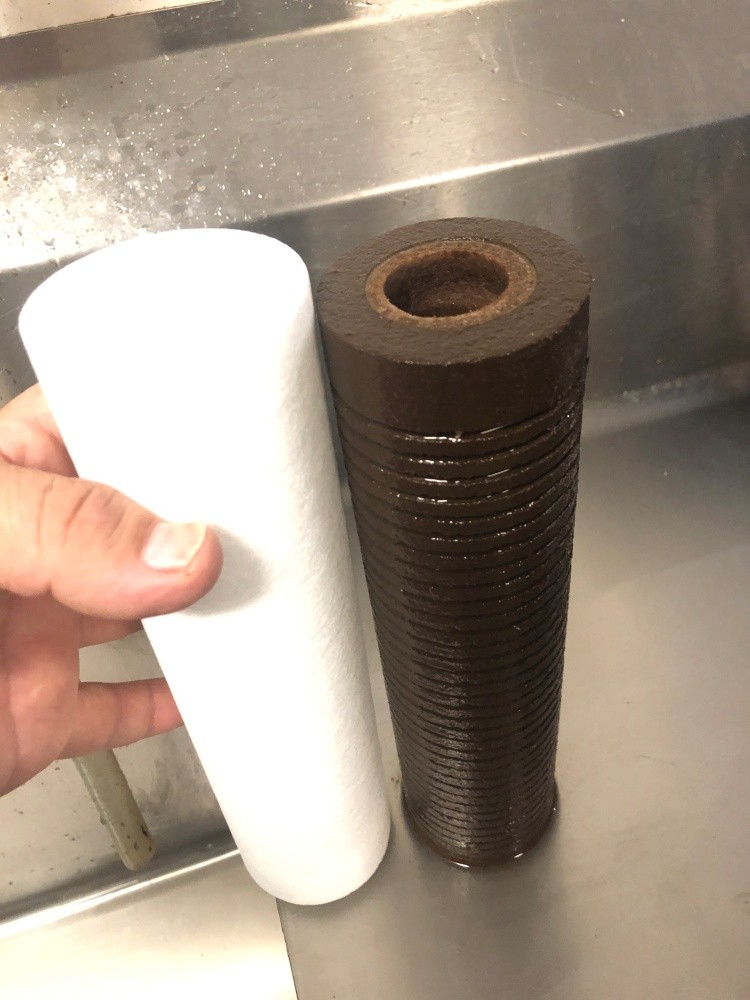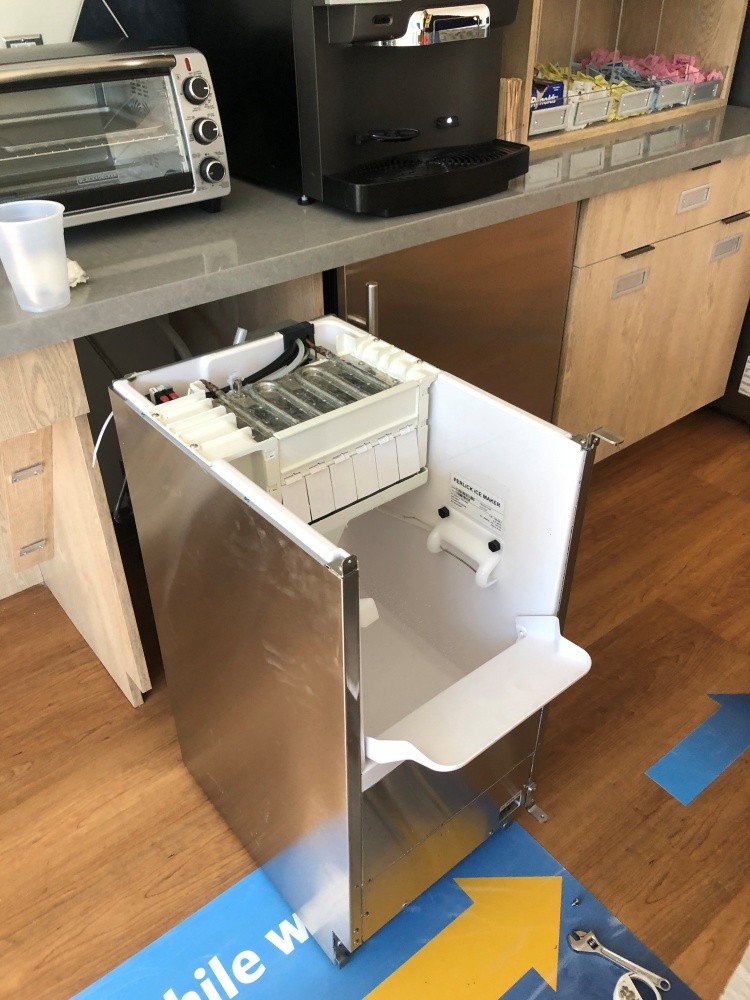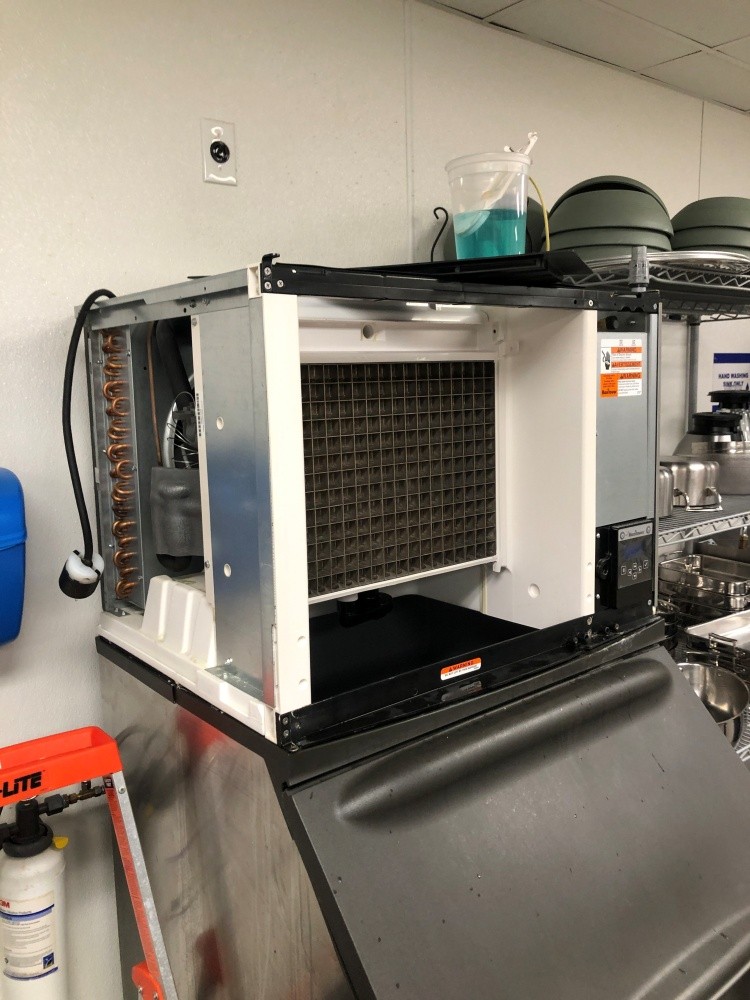Good practices enhance food safety, extend equipment life
 Very few end users fully understand the importance of properly cleaning and sanitizing their ice machines, storage bins, and dispensers. Many don’t even view ice as a food commodity. Yet the quality and safety of every beverage they serve as well as the longevity and power consumption of their equipment depends on proper maintenance of this equipment.
Very few end users fully understand the importance of properly cleaning and sanitizing their ice machines, storage bins, and dispensers. Many don’t even view ice as a food commodity. Yet the quality and safety of every beverage they serve as well as the longevity and power consumption of their equipment depends on proper maintenance of this equipment.
Here are some tips that can help do a thorough job when cleaning an ice machine and help ensure your customers’ or/and your food safety.
WATER FILTRATION
 Nothing is more important than the water going into the machine. Therefore, analyze the local water conditions to determine what kind of filtration is needed. Recent Legionnaires’ disease outbreaks as well as cryptosporidiosis and giardiasis traced back to ice machines have caused a change in philosophy of water filtration for equipment. Be aware that using carbon filters, which are typically used for taste and odor elimination, is not a good solution. ANSI/ASHRAE Standard 188-2015, “Legionellosis: Risk Management for Building Water Systems,” states that disinfectant should remain in the water supply. This means chlorine and chloramines should not be eliminated, and carbon taste and odor filters remove all such disinfectants. Particulates and parasitic cysts still need to be removed, and scale inhibitor needs to be added. Filters are available that will accomplish this — consult with your local suppliers.
Nothing is more important than the water going into the machine. Therefore, analyze the local water conditions to determine what kind of filtration is needed. Recent Legionnaires’ disease outbreaks as well as cryptosporidiosis and giardiasis traced back to ice machines have caused a change in philosophy of water filtration for equipment. Be aware that using carbon filters, which are typically used for taste and odor elimination, is not a good solution. ANSI/ASHRAE Standard 188-2015, “Legionellosis: Risk Management for Building Water Systems,” states that disinfectant should remain in the water supply. This means chlorine and chloramines should not be eliminated, and carbon taste and odor filters remove all such disinfectants. Particulates and parasitic cysts still need to be removed, and scale inhibitor needs to be added. Filters are available that will accomplish this — consult with your local suppliers.
CLEAN COMPLETELY
When cleaning an ice machine, disassemble, soak, and hand-clean as many components as possible. Remove all ice and clean and sanitize the storage bin, as well. Clean the underside of the machine, all drain lines, and the outside of the bin or dispenser. Sanitize completely using quaternary ammonia. Mix some in a spray bottle and spray all surfaces at the completion of your service and allow it to dry on its own. Do not rinse it off. This will help deter bacterial and biofilm growth. Any growth left in drains, bins, or dispense areas will cause regrowth at a much faster rate. Clean and flush completely.
USE APPROVED CHEMICALS
 Use only chemicals for scale removal that are approved by the manufacturer. Some materials and the plating of metal surfaces can be damaged by improper chemicals. Plastic pieces and hoses can be removed and cleaned with stronger chemicals, if necessary. Always use hot water when mixing chemicals, and always mix them to the suggested strength. Adding more cleaner will not help. Running cleaner through the machine longer doesn’t help either. After 20-30 minutes of cleaning, the pH level of the cleaner is back to neutral and it is no longer effective.
Use only chemicals for scale removal that are approved by the manufacturer. Some materials and the plating of metal surfaces can be damaged by improper chemicals. Plastic pieces and hoses can be removed and cleaned with stronger chemicals, if necessary. Always use hot water when mixing chemicals, and always mix them to the suggested strength. Adding more cleaner will not help. Running cleaner through the machine longer doesn’t help either. After 20-30 minutes of cleaning, the pH level of the cleaner is back to neutral and it is no longer effective.
Mix up a new batch of cleaner and re-clean, as necessary. Never mix different cleaners together or add more to a mixed solution. Remember, as with all chemicals, follow the material safety data sheet (MSDS) guidelines for personal protective equipment, and be aware of how to treat exposure. Be prepared to properly clean up any accidental spills. Safety glasses or goggles and long chemical gloves are a must.
CLEANING TOOLS
Nylon brushes, toothbrushes, and mild abrasive pads can all be used. Avoid using anything that might scratch or mar any surfaces, because any place that is scratched or marred will allow scale and bacteria a place to grab onto and grow. For cleaning out hoses and crevices, specialty brushes can be obtained. One source is your local music store – the brushes used for cleaning out trombones and French horns can be used for cleaning out hoses and drain lines.
Another way of dislodging debris in drains is to adapt a hose fitting to ¼-inch poly tubing and putting about a 6-foot length of tubing down the drain line to flush it out. This works well on reach-in and walk-in refrigeration units, as well. Remember, you are not just trying to make sure these lines drain — you are ensuring they are flushed out completely in order to prevent regrowth.
ALTERNATIVE TREATMENTS
Ultraviolet lights, chlorine sachets, ozone water treatment, and other technologies are available both as OEM accessories and as aftermarket kits. These devices are designed to inhibit bacterial and biological film growth, though they’ll generally do nothing for scale buildup. Many manufacturers have developed special plastics that inhibit microbial growth, as well, so make sure any aftermarket devices will not void any warranties. In most cases with newer machines that have the antimicrobial plastics, it is not usually necessary to add anything beyond regular maintenance to keep machines clean. Exceptions are where airborne yeast is present, such as in bakeries, sandwich shops, and pizzerias. Also, be aware that any exposure to beer causes an increase in bacterial growth and increases the risk of contamination.
FLAKE AND NUGGET MACHINES
 Flake and nugget ice machines require a little special care. They will hold more mineral deposits because of their entire use of the water source (as opposed to cubers that only freeze pure water). When working with flake and nugget machines, be sure you pull the extrusion head, check the auger and evaporator surface, check all bearing tolerances, and make sure drive motor amperage is correct after cleaning.
Flake and nugget ice machines require a little special care. They will hold more mineral deposits because of their entire use of the water source (as opposed to cubers that only freeze pure water). When working with flake and nugget machines, be sure you pull the extrusion head, check the auger and evaporator surface, check all bearing tolerances, and make sure drive motor amperage is correct after cleaning.
RUN A PRODUCTION CHECK
Remember, the most important thing is to deliver quality ice to customers with no imperfections or contamination. After cleaning an ice machine, it’s a good idea to run a production test to ensure the machine is working properly. It’s also a good idea to take before-and-after pictures, as well.
To run a production test for a cuber, simply time, catch, and weigh a batch of ice and record the air temperature entering the condenser and the water temperature. Convert time to a decimal (for example, 14 minutes and 30 seconds would be 14.5) divide that into 1,440 (the number of minutes in a 24-hour period) and one will arrive at the number of cycles per day. Multiply that by the weight and that will give total production for a day. Compare this to the manufacturer’s published production for the ambient and water temperatures
For a nugget or flake ice machine, it is even easier. Catch ice for 15 minutes and weigh. Multiply by four and then again by 24 and that will total the 24-hour production that can then be compared to the manufacturer’s specifications for the given ambient and water temperatures.
After ensuring proper operation, a tech may need to coach the customer on proper ice management. Remind them not to waste ice. Explain to them to fill all drink stations and bar boxes at the end of the night and first thing in the morning and to rake the ice down afterwards to ensure the machine is running 24 hours a day. This will ensure maximum production, especially during high summer demand.
By making sure the proper water filtration is in place, cleaning the equipment properly and regularly (generally every six months), and educating customers on how to get the most out of their ice machines, a company can provide exceptional service and help eliminate one of the industry’s customers’ biggest headaches: running out of ice. In addition, a tech can ensure customers are receiving quality beverages, as well.
